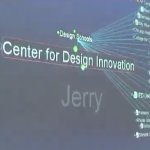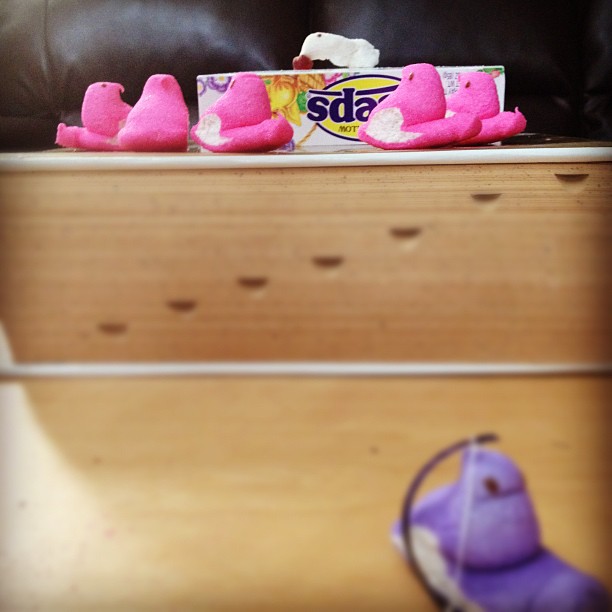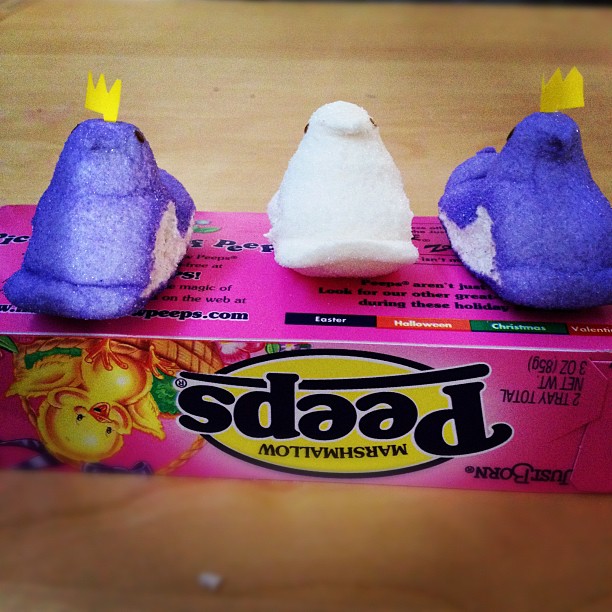There are some great conversations happening over at the Advanced Social Media Strategies for PR, Marketing and Corporate Communications event at Cisco today. In particular, wanted to give a shout out to our CEO Sean O’Driscoll, who is presenting today on the topic of Turning Fans into Advocates. Check out Sean’s deck, embedded below.
It’s no game…
This one should be a lot of fun. Sean O’Driscoll will be presenting with the folks over at Badgeville on the topic of engagement and gameification in a webinar on April 25th at 10:30 PT. (Register here.) The quick agenda:
- How to use the Journey to the Engaged Enterprise as a benchmark for your external and internal social engagement plans
- Critical milestones at each stage of the Journey, and common obstacles that can prevent you from reaching them
- Why the principles of Badgeville’s Behavior Platform are critical to driving the kind of successful, sustainable customer and employee activities that will help you evolve into a Fully Engaged Enterprise.
The Social Engagement Journey event, April 23
 Sean O’Driscoll, our fearless leader at Ant’s Eye View, is keynoting an event next Monday here in the Bay Area. Here’s the description:
Sean O’Driscoll, our fearless leader at Ant’s Eye View, is keynoting an event next Monday here in the Bay Area. Here’s the description:
“Becoming a fully engaged enterprise in today’s social world isn’t about creating a “social media strategy.” It is a journey defined by stages of operational maturity, milestones, and ultimately, a destination. The successful journey requires practitioner experience, pragmatism – and perseverance. But the payoff is immense. The fully engaged enterprise discovers on this journey that customers again trust them, recommend them, and equip them with new insights. Connected and impassioned employees in the fully engaged enterprise lead and foster the online conversation and attract the industry’s best talent. Companies willing to embark on this transformative journey can, and will, re-emerge as powerful connected brands.”
The event will be at EMC’s campus in Santa Clara. Hope to see you there! Details are here:
The Social Journey 2831 Mission College Blvd Santa Clara, CA, 95051
April 23, 2012 5:30-8:00 PST
The Hunger Peeps
No, you can’t control your own data, says the travel industry
 A big thanks to Jennifer Cobb for the link to this New York Times article entitled “Swatting Down Startups That Help Consumers.” The gist is that there are a raft of startups that act on the behalf of customers in interacting with big brands (These kinds of services can be thought of as “fourth party” services.) Some examples:
A big thanks to Jennifer Cobb for the link to this New York Times article entitled “Swatting Down Startups That Help Consumers.” The gist is that there are a raft of startups that act on the behalf of customers in interacting with big brands (These kinds of services can be thought of as “fourth party” services.) Some examples:
- Customer-benefitting booking engines for car rentals
- Airline milage program points aggregators (think Mint.com, but for points)
- Airline seat watchers that automatically rebook you to a better seat when one opens up
A number of brands (American, Soutthwest, Hertz, etc.) have acted in ways to restrict the ability for customers to use these services to attempt to improve their travel experience.
The linked article above is worth a read.
image: NYTimes
Some musings on “small data”
The concept of “big data” is, ultimately, going to hit a brick wall. Here’s why.
For a number years now, the concept of being able to collect, mine and process massive data sets that predict customer behavior has been a modern day holy grail. However, many organizations struggle to develop customer insights because they primarily focus on understanding markets rather than individuals. Overall, at least 80 percent of CMOs rely on traditional sources of information, such as market research and competitive benchmarking, to make strategic decisions.
With that context, here are a few things to think about:
- According to a recent study via The Next Web, engagement for some leading brands on Facebook is less than 0.0001 – that’s less than one engagement for every 10,000 opportunities. That’s poor. So, having huge amounts of personal information and being able to target individuals in that context doesn’t seem to be a panacea.
- Individuals are starting to understand the implications of sharing all of their information online, and what it means when all of this data is correlated together. The recent flap over Girls Around Me writ large the implications or correlating even small amounts of data about individuals without their explicit knowledge.
 There is a flip side to this. Think of it as “small data.” In contrast to huge, correlated data sets of petabytes, exabytes and zettabytes of data, instead individuals will have their own personal data stores. (That personal data store link is a must-read from the Financial Times.) Here’s an example. Jerry Michalski has kept his information in a system called The Brain for over fifteen years. Here’s a video of Jerry speaking at the Personal Digital Archiving conference on his experience of capturing over 150,000 pieces of information over the past decade and a half. (Think about that for a second. There’s a conference for “personal digital archiving.”)
There is a flip side to this. Think of it as “small data.” In contrast to huge, correlated data sets of petabytes, exabytes and zettabytes of data, instead individuals will have their own personal data stores. (That personal data store link is a must-read from the Financial Times.) Here’s an example. Jerry Michalski has kept his information in a system called The Brain for over fifteen years. Here’s a video of Jerry speaking at the Personal Digital Archiving conference on his experience of capturing over 150,000 pieces of information over the past decade and a half. (Think about that for a second. There’s a conference for “personal digital archiving.”)
Understanding that this sea change is coming is going to be implicit in the future success of business. As such, here’s something you can do right now.
Go to http://www.networkadvertising.org/managing/opt_out.asp. It shows you the advertising cookies that are being tracked in your browser. Realize that even though many of us wear our “business” hats for a good majority of our waking hours, we’re all still individuals as well. We are all customers. As such, we are all responsible for our own information.
As these issues become more widely understood, more individuals will be tracking their own information. Perhaps it won’t be to the level that Jerry has done it in the video above, but it will be happening. This means that we, while wearing our business hats, will need to be developing real relationships with our customers. We need to listen to what they are saying, what they are asking for, and working collaboratively with them in order to help them fulfill their needs. In the best cases, we’ll have built up levels of trust with our customers and will have been given the explicit permission to access our customers’ personal data stores. In doing so, we’ll be able to actually take the guesswork out of the equation that was noted so clearly above in the Facebook example and will, instead, be able to connect directly with our customers’ intentions and deliver value on their terms.
 Sponsored post disclosure: This post was written as part of the IBM for Midsize Business program, which provides midsize businesses with the tools, expertise and solutions they need to become engines of a smarter planet
Sponsored post disclosure: This post was written as part of the IBM for Midsize Business program, which provides midsize businesses with the tools, expertise and solutions they need to become engines of a smarter planet
“Better targeting” is not the panacea to customer loyalty
Trending worldwide on Twitter right now: “Two ways to fix customer loyalty programs.”
The lede:
“Consumers aren’t as loyal to loyalty programs as they used to be.
Since 2008, the number of consumers who feel that such initiatives don’t offer any real value jumped by 50%,according to a study by Forrester Research. The same study also found that almost one-third of consumers say that loyalty programs don’t influence their purchase — that’s up from 22% in 2008.
Why the dissatisfaction? Let’s call it the Groupon factor. Since 2008, there have been a flood of daily dealmerchants, like Groupon and LivingSocial, that have filled customers inboxes with irrelevant offers. (Groupon itself has recently employed a Pandora-like “thumbs up, thumbs down” rating system to tackle this problem, which is best illustrated by the example of middle-aged men getting offers for bikini waxes.)”
The answers they propose are crap, however. The answer is not “better targeting” of customers. The answer is not “mobile payments.”
The answer is making the customer a full participant in the process. Start here.
A new kind of advertising hell
This is the first time I’ve seen this. AdWeek is redacting their content until you click and “engage” with one of their ad units. This is a perfect example of the concept of “bad attention” that I’ve written about previously. Of course, I’m sure the metrics they are tracking around engagement are through the roof. I’m also sure they are not taking into account the destruction of goodwill caused by using tactics like this. Check out the video below to see how annoying this is.
Cisco’s Social Engagement Journey [VIDEO]
Guest post today from my colleague Todd Shimizu, cross-posted from the Ant’s Eye View blog.
We love to see brands get out there and talk about how they’re tackling the transformation to engaged enterprise. Today, we’re thrilled to share this video, posted by Cisco, in which Jeanette Gibson, Sr. Director, Global Social and Digital Media, shares her vision based on Ant’s Eye View’s Social Engagement Journey.
Cisco has consistently used the Social Engagement Journey as a diagnostic tool for their social business progress. In fact, some of that work has even been featured in this blog: The Cisco Social Media Listening Journey. Their internal commitment to this framework has created a uniform, galvanizing taxonomy for talking about social business transformation within their team, with internal stakeholders, and as you see here, with the industry.
One of my favorite aspects of the video is how Jeanette and Cisco have changed the aperture of the Social Engagement Journey to the “Digital Journey.” Cisco isn’t the first of our clients to make this adjustment and I don’t suspect they’ll be the last. As a result of the change management introduced by social, we’ve seen many clients seeking to address systemic change in not only their digital practice – but also in their overall marketing operations.
Jeanette’s also done a great job of demonstrating how the journey can be more than just another framework. By using practical examples (e.g. “metrics your CEO cares about”) coupled with the qualitative (e.g. “it all works seamlessly”), Jeanette’s told you what the Social Engagement Journey, or in this case the Digital Journey, should feel like – and that can be a powerful piece of narrative inside a brand.
For those headed to ad:tech San Francisco tomorrow, say hello to Jeanette as she and Julia Mee talk about “The New Marketing Mix: Integrating Digital into Traditional and Vice Versa.” You can find all the details from Cisco here.
The Relationship Funnel
In many marketing organizations, the steps in the interaction between an organization and its customers have traditionally followed a predictable sequence, starting with “awareness” and culminating in some form of “action” on the part of the customer. It usually looks something like this:
- Unaware: The customer does not know of the company and/or its offerings
- Awareness: The customer has become aware of the company/offering
- Consideration: The customer is considering the company as a potential solution to one of the customer’s current needs
- Intent: The customer intends to purchase from the company
- Action: The customer acts on the intention, and makes a purchase from the company
(Note the “action” might not always be a purchase, per se, but may be some other point-in-time interaction with the company, such as attending an event or downloading a whitepaper.)
There are a wide variety of situations where the model above accurately represents the sequence of events leading up to an individual transaction, from the company’s point of view. While the model above is well-understood and relevant in the transactional world, a social and relationship-driven world requires a complementary way of thinking.
When building a business relationship, the sequence similarly starts with “awareness” (since one can not have a true relationship without being aware of the other party), and progresses until a “strong tie” is built between the two parties. The progression on the relationship side of the world looks something like this:
- Unaware: The customer does not know of the company
- Awareness: The customer has become aware of the company
- Weak tie: The customer and company have developed a basic awareness of each other, and feel mild affinity toward each other
- Building: Subsequent interactions mutually strengthen the relationship between the two parties
- Strong tie: Both parties feel a strong affinity, and perhaps even a level of responsibility, toward each other
In building these relationships, we create a base from which activities can be launched. In doing so, we evolve from a campaign-based model to one that is “always on.” Visually, it looks something like the image below.
So, what’s the take-away? The key thing to note is that both types of interactions are needed in order to effectively compete. Campaigns are still needed in many cases, especially around point-in-time activities such as events and product launches. That said, having a strong set of relationship ties with customers can make those same campaigns even more effective, building upon the existing relationships to increase their reach and impact. Relationships become the base upon which campaigns become more effective.
The recent report, From Stretched to Strenghened, states that “the vast majority of [midmarket] CMOs believe there are three key imperatives that will enable them to respond to the marketing challenges in today’s complex world. They must understand and deliver value to empowered customers; create lasting relationships with those customers; and measure marketing’s contribution to the business in relevant, quantifiable terms.”
To this end, there are three things you can do today to begin to create lasting relationships with customers and expand the “base” illustrated above:
- Identify your top twenty individual customers
- Connect with them either on a community that your organization has set up, or on public sites such as LinkedIn, Facebook or Twitter
- Read their contributions on a daily basis (it will only take a few minutes) and join in the conversation if appropriate
By taking the three steps above, you will invariably find that you will begin to build that base of relationships that will increase the effectiveness of all of your other customer-facing activities.
 Sponsored post disclosure: This post was written as part of the IBM for Midsize Business program, which provides midsize businesses with the tools, expertise and solutions they need to become engines of a smarter planet
Sponsored post disclosure: This post was written as part of the IBM for Midsize Business program, which provides midsize businesses with the tools, expertise and solutions they need to become engines of a smarter planet










